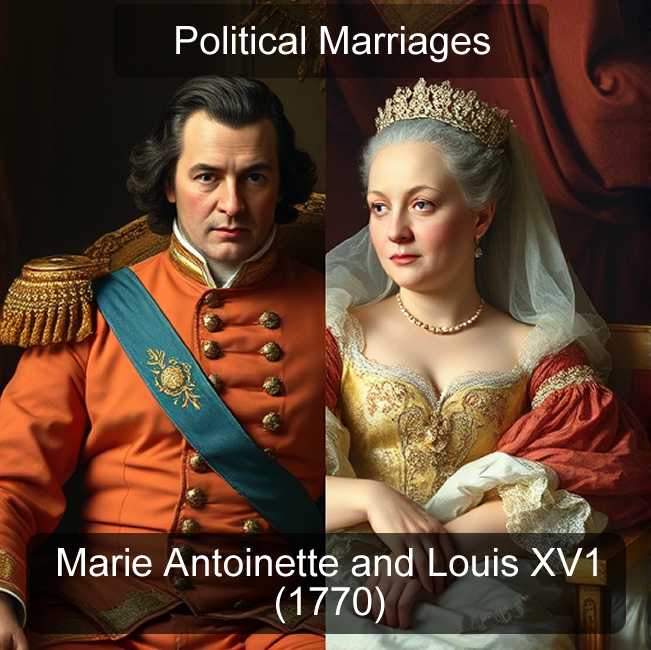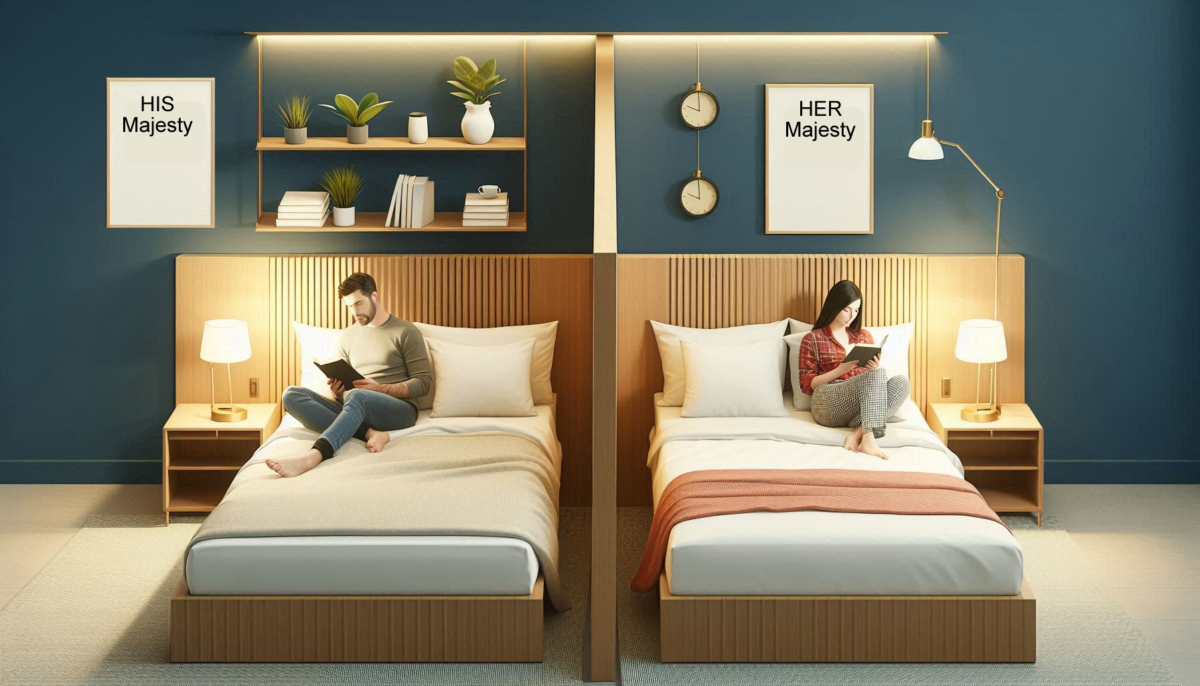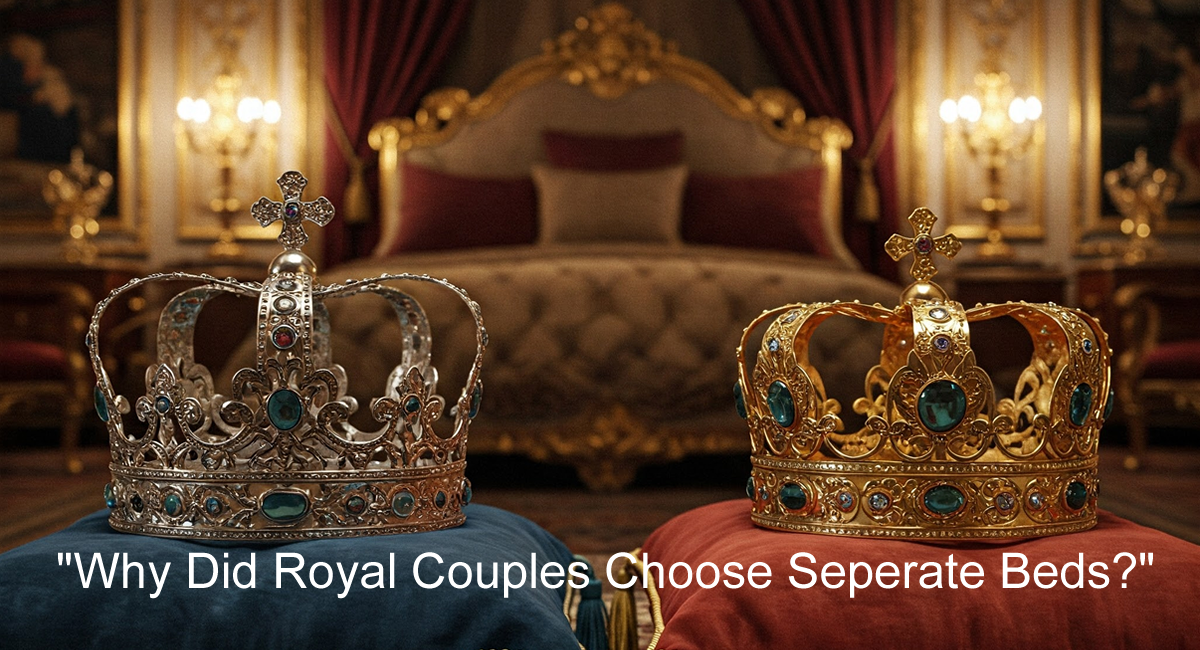Sleep Talk Blog
Why Did Royal Couples Choose Separate Beds? Unraveling a Centuries-Old Mystery
The idea of queens and kings always sleeping in separate beds is a bit of a misconception, though it certainly happened and was sometimes preferred for various reasons. It's not a universal rule throughout history or across cultures. Here's a breakdown of the historical context and why the "separate beds" notion arose:
Reasons for Separate Sleeping Arrangements (Historically):
- State and Ceremony: Royalty, especially in earlier times, were often expected to maintain a certain level of formality and distance, even with their spouses. Sharing a bed might be seen as too intimate or common for someone of their status. Separate beds or even separate bedrooms emphasised their royal position.
- Hygiene and Health: In times before modern sanitation, sharing a bed could mean sharing germs and potentially spreading illness. Separate beds offered a degree of protection, especially for the monarch, whose health was crucial to the kingdom.
- Privacy and Personal Space: Even royalty need some time to themselves! Separate sleeping arrangements allowed each individual to have their own space and get a better night's rest without being disturbed. Snoring, restlessness, or differing sleep schedules could be factors.
- Extramarital Affairs (Sometimes): While not the primary reason, separate beds could sometimes provide a degree of discretion for affairs. However, this is more of a consequence than the initial cause.
- Pregnancy and Childbirth: During pregnancy and after childbirth, women often slept separately for comfort and to care for the newborn. This wasn't exclusive to royalty, but it was more common among the upper classes.
- Changing Fashion: The style of beds and bedrooms has changed throughout history. At certain points, large, elaborate beds were fashionable, but they weren't always conducive to comfortable sleep for two people. Sometimes, separate beds were simply more practical.
It's crucial to remember that not all royalty slept separately. Many royal couples throughout history shared beds and had loving, intimate relationships. The idea of separate beds is more of a stereotype, though it did occur for the reasons listed above. It's not a universal truth about all kings and queens.
What about "political marriages"?

Historical Political Marriages
- Henry VIII and Catherine of Aragon (1509)
Henry VIII married Catherine of Aragon to strengthen England's alliance with Spain. The marriage was politically motivated, though it eventually led to significant religious and political upheaval in England. They shared a bed early in their marriage, but their relationship deteriorated over time. - Marie Antoinette and Louis XVI (1770)
This marriage was arranged to solidify an alliance between Austria and France. Marie Antoinette, an Austrian archduchess, married the future King of France to maintain peace between the two nations. While they shared a bed initially, their relationship became strained, and they eventually lived separately. - Cleopatra and Mark Antony (40 BCE)
Cleopatra's relationship with Mark Antony was as much about political alliance as it was personal. Their union was intended to strengthen Egypt's position against the Roman Empire. - Isabella of Castile and Ferdinand of Aragon (1469)
Their marriage united the kingdoms of Castile and Aragon, laying the foundation for modern Spain and enabling the completion of the Reconquista. - Napoleon Bonaparte and Josephine de Beauharnais (1796)
Although their marriage began with affection, it also had political undertones, as Josephine's connections helped Napoleon rise in French society.
Modern Political Marriages, Do they Share a Bed?
- Bill and Hillary Clinton
While their marriage is often seen as a partnership based on love, it has also been described as a political alliance. Their combined efforts have been central to their political careers. They have shared a bed throughout their marriage, though their relationship has been the subject of much speculation. - Jared Kushner and Ivanka Trump
The marriage of Jared Kushner and Ivanka Trump has been viewed as a merging of powerful political and business families, with both playing significant roles in Donald Trump's presidency. They appear to share a bed and maintain a close personal and political partnership. - Kim Jong Un and Ri Sol-ju
The marriage of North Korea's leader, Kim Jong Un, to Ri Sol-ju is believed to have been arranged to bolster his image and strengthen his political standing. - Prince William and Catherine Middleton
While their marriage is rooted in love, it also serves to modernize and stabilize the British monarchy, ensuring its continued relevance. They share a bed and present a united front as a modern royal couple. - Emmanuel and Brigitte Macron
The French president's marriage to Brigitte Macron, though unconventional due to their age difference, has been a key part of his public image and political narrative. In 1993, at the age of 39, she met the 15-year-old Emmanuel Macron in La Providence High School, where she was a teacher and he was a student and a classmate of her daughter. Brigitte divorced Auzière in January 2006 and married Macron on 20 October 2007.
Purposes of Political Marriages
- Alliances: Strengthening ties between nations, families, or political factions.
- Legitimacy: Securing power or inheritance rights.
- Public Image: Enhancing a leader's or politician's reputation.
- Economic Gain: Merging wealth or resources.
Political marriages, often referred to as "marriages of convenience" or "strategic alliances," are unions where the primary motivation is political, social, or economic gain rather than romantic love. These marriages have been a part of history for centuries and continue to occur in various forms today. Here are some notable examples of political marriages, both historical and contemporary:
The Role of "Sleep Divorce" in Political Marriages
Even in political marriages, some couples may choose to sleep separately for practical reasons, such as differing schedules or sleep habits. This doesn't necessarily indicate a lack of affection or partnership—it may simply be a matter of practicality.
Whether couples in political marriages share a bed varies widely. Some do so out of love or for appearances, while others maintain separate sleeping arrangements for personal or strategic reasons. The dynamics of each relationship are unique, and sleeping arrangements are just one aspect of a much larger picture.
In Modern Times:

The idea of separate beds has become more common even among non-royals, and it’s a trend driven by modern lifestyles, health considerations, and changing attitudes toward relationships. It's no longer seen as unusual or indicative of a troubled relationship, this is sometimes known as a "sleep divorce".
Celebrities who are "sleep divorced"
- Cameron Diaz and Benji Madden
Cameron Diaz has mentioned that she and her husband sleep in separate beds. She emphasised that it helps them maintain a healthy relationship and get better sleep. - Neil Patrick Harris and David Burtka
Neil Patrick Harris has talked about how he and his husband, David Burtka, sometimes sleep in separate rooms due to differing sleep schedules and preferences. - Snooki (Nicole Polizzi)
The Jersey Shore star revealed that she and her husband sleep in separate beds because of their different sleeping habits, including her husband's snoring. - Anna Kendrick
Anna Kendrick has joked about the idea of sleep divorce in interviews, suggesting that separate sleeping arrangements can be beneficial for couples. - Kevin Jonas and Danielle Jonas
Kevin Jonas shared that he and his wife occasionally sleep in separate beds when one of them is snoring or needs better rest. - Helena Bonham Carter and Tim Burton (while they were together)
The former couple famously lived in separate but adjoining homes during their relationship, which included separate sleeping arrangements.

